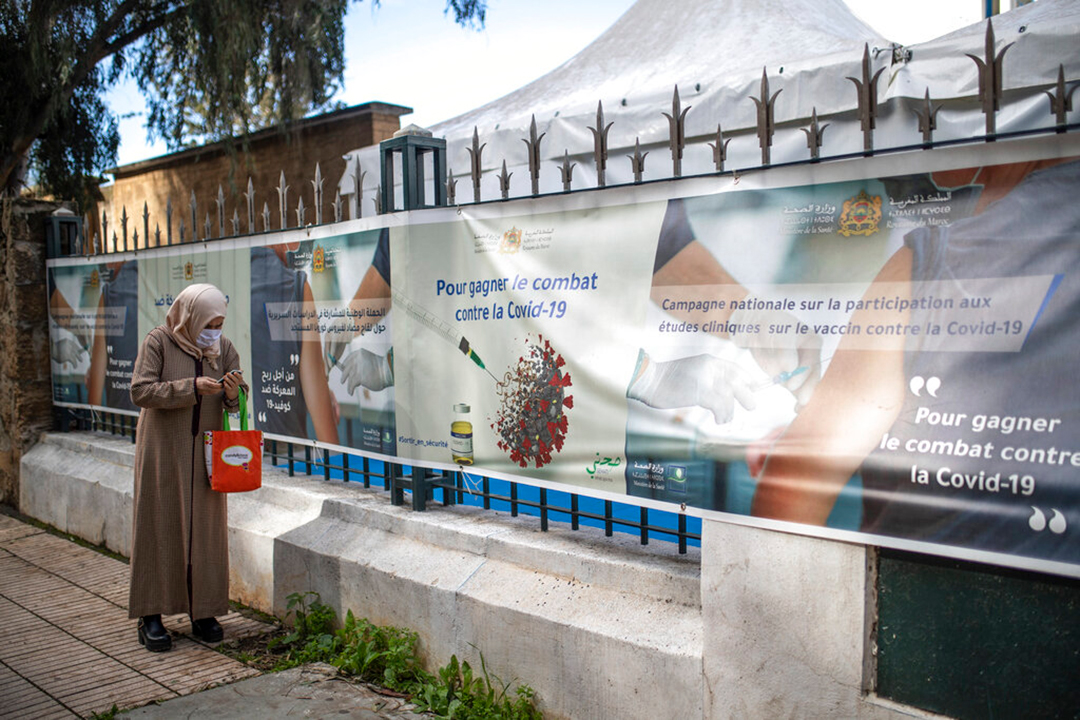Second Wave Highlights Differences in Handling COVID-19
ADF STAFF
A surge of COVID-19 infections now sweeping across Africa is highlighting the different approaches taken by nations and exposing long-standing health care weaknesses, according to an analysis by the Africa Center for Strategic Studies (ACSS).
More than half of Africa’s 54 countries have reported steadily rising infection rates since October 2020, many of them a result of a new variant known as 501Y.V2 that appeared in South Africa at the end of 2020. South Africa and Morocco lead the continent in infections.
The sharp rise in infections makes the second wave dramatically different from the first, which peaked in mid-2020. Infections reached 1 million cases continentwide in August. By early January 2021, infections had tripled, due in part to reopened airports and relaxed precautions such as masks and social distancing as the new variant spread.
Asymptomatic carriers — people who have the infection but never develop symptoms — also appear to have had a role in spreading the disease during the second wave, according to the Africa Centres for Disease Control and Prevention (Africa CDC).
Although the new variant has proven more infectious, it appears no more deadly than the original, Africa CDC Director John Nkengasong said during a weekly update in December. But rapidly rising infections also mean rapidly rising deaths, he said.
“Even if the new variant is not more virulent, a virus that can spread more easily will put further strain on hospitals and health workers who are in many cases already overstretched,” Dr. Matshidiso Moeti, Africa regional director for the World Health Organization, said in a statement on January 14. “This is a stark reminder that the virus is relentless, that it still presents a manifest threat, and that our war is far from won.”
The ACSS analysis of the continent’s second wave of COVID-19 reveals several key elements of how and why this wave may be worse than the first.
Hot Spots
The worst impact of the second wave is being felt in 15 countries, nearly all of them gateway countries with large amounts of international contact, older populations and densely packed cities. Leading this group is South Africa, where the new virus variant that first appeared in Cape Town has accelerated the current wave of new infections. Other coastal countries, including Morocco and Tunisia, are on the list. The second wave of infections accounts for nearly three-quarters of Morocco’s total infection count for the entire pandemic. Tunisia, which appeared to have nearly beaten the virus in mid-2020, saw a spike after reopening the borders to tourism in July. In many cases, these same countries have the continent’s best public health systems, which have helped detect new cases through extensive testing.
Health Systems Stressed
Practically from the first days of the pandemic, COVID-19 has strained Africa’s health care systems. The continent is home to 22 of the world’s 25 countries most at risk of large-scale disease outbreaks, according to an analysis by the Rand Corp. The countries with the lowest-rated public health systems include many in Central Africa — the Central African Republic, Chad, the Democratic Republic of the Congo, and South Sudan among them. Those countries also have ongoing conflicts and large populations of displaced people, all of which complicate their ability to identify and stop the virus’s spread.
Conflict vs. Stability
Nearly a dozen countries — mostly concentrated in the Sahel but including Libya, Mozambique and Somalia — are experiencing conflicts that have weakened or disrupted their public health systems, pushed their citizens toward urban areas and created large populations of displaced people. At the same time, however, they benefit from minimal international contact, which reduces the risk of infections from the new variant.
At the other end of the spectrum are Ghana, Kenya, Senegal and a handful of other countries known for having stable governments, a transparent approach to reporting information about the virus and an ability to stop infections at their borders. That lets the governments dedicate more resources to fighting the spread of COVID-19.
As the second wave sweeps across the African continent, the national leaders are looking to the COVAX facility, the African Union and other avenues to bring vaccines to their citizens quickly and fairly. The Africa CDC has warned that unless the continent receives vaccines at the same time as other parts of the world, Africa could become a reservoir for the disease, leading to further mutations and making it even more difficult to stamp out.


Comments are closed.